PATHOLOGY LIVE COLLABORATION FEATURE
AISight Live is a live collaboration feature that empowers pathologists to collaborate on patient samples in real-time, reducing turnaround times and improving diagnostic accuracy. Traditional methods, which can include in-person consultations, are inefficient and slow. With AISight Live, pathologists can collaborate more quickly, efficiently, and effectively, delivering faster diagnoses for more patients.
Tl;dr: I designed an online live collaboration tool that enables pathologists to collaborate in real time, improving the speed and accuracy of diagnoses.
In order to comply with my non-disclosure agreement and HIPAA, I have not included any proprietary information, precise research data, or PHI in this case study.
My Responsibilities
As the Lead Product Designer, I was responsible for defining the user experience, collaborating closely with one Product Manager and six engineers. I led ideation and research, steered the design process, and drove the iterative development to launch.
Ideation
Research: I conducted a multi-pronged research campaign, attending trade shows and speaking with pathologists to identify pain points and opportunities for digital collaboration. This research directly informed our product vision and MVP feature set.
Deployment Strategy: I worked with product and engineering to help define the MVP feature set for launch.
Exploration: I created multiple concepts quickly by relying on our design system.
Iteration
Experimentation: I tested my concepts with both internal and external pathologists to gauge effectiveness.
Iteration: The designs took in feedback from multiple stakeholders at each point to push the concept forward.
Implementation
Learn through launch: We actually soft launched the feature to showcase it to prospective clients. The main 1.0 launch will occur in Q1 2024.
The Challenge
problem space
Pathologists have traditionally relied on in-person consultations for second opinions, which can be time-consuming and costly. The need for a digital solution that enables synchronous collaboration was critical to improving diagnosis speed and efficiency.
This results in longer and more expensive diagnoses turnaround time. I had already designed a region comment feature which allowed pathologists to tag other users so they could view a highlighted region and provide asynchronous feedback.
A traditional analog setting where pathologists sit at a multi headed microscope to synchronously view the same slide.
Pathai opportunity
The key opportunity was enabling decentralized, digital collaboration to address the significant pain points in pathology workflows, while also aligning with PathAI’s strategic goals of enhancing diagnostic efficiency and market differentiation.
Provide a synchronous collaboration platform that allows pathologists view, annotate, and communicate together.
Wireframing and Initial Design
I led the wireframing and initial design process, collaborating with cross-functional teams to test concepts and ensure alignment with both user needs and business objectives. Each iteration was tested rigorously to ensure that the final design addressed the core pain points effectively.
Collaboration at the individual slide level by adding it to the toolbar
Iteration
Through continuous testing with internal and external pathologists, I iterated on the design to ensure the tool was intuitive and aligned with real-world workflows. I also led the strategic discussions on feature prioritization, ensuring that we were delivering maximum value with each release.
The original MVP scope was to support the curbside consultation flow, which in most cases is when pathologists are looking for quick validation on one case. Therefore, I started with a tactical, per slide tool that only allowed pathologists to look at one slide. Pathologists responded by saying it would be too cumbersome for them to adopt because they’d need to start new sessions whenever they’d want to talk about another case, something they did frequently. This insight led me to push back on the MVP scope to expand it to address more core use cases. Ultimately, the product team agreed based on feedback
As I continued to iterate, I pulled back on the IA so that it lived alongside the entire platform, allowing pathologists to add cases to a queue to fulfill more use cases like group consensus meetings and tumor boards. These types of meetings include many more specialists that each bring their own “hard to diagnose” cases to the conversation for everyone to review. Pulling back the IA allowed me to address more use cases, which pathologists reacted to much more approvingly.
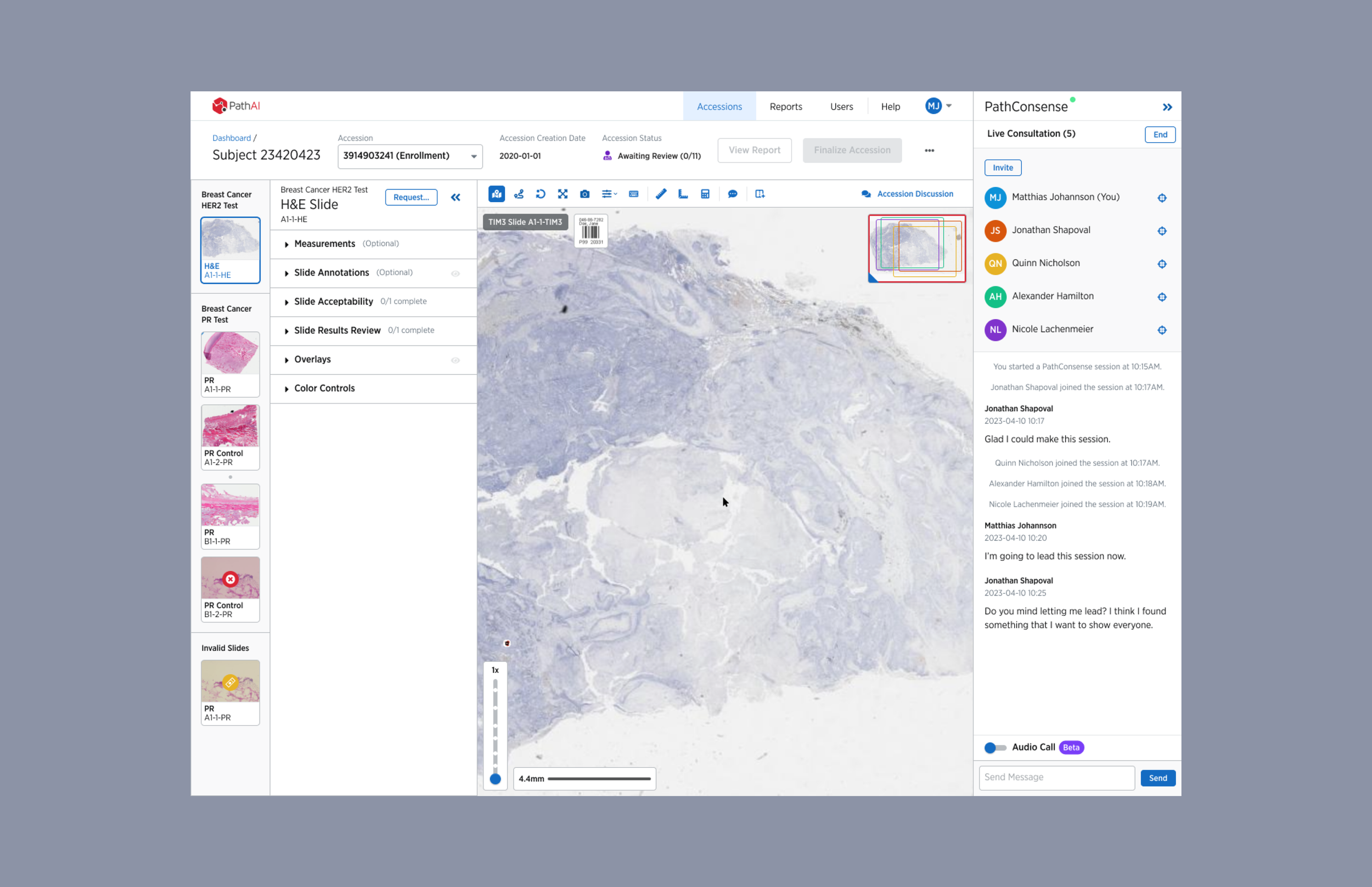
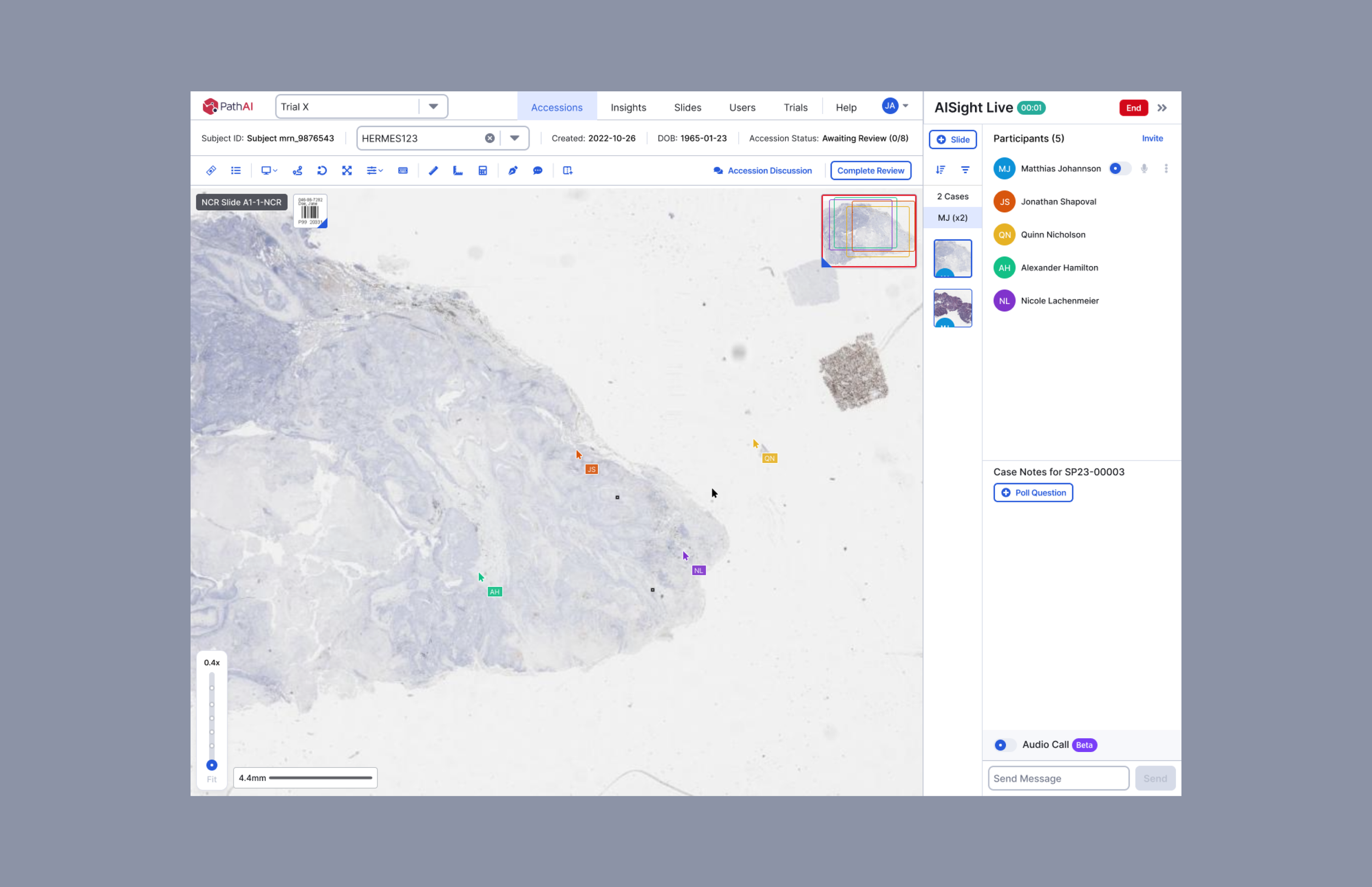
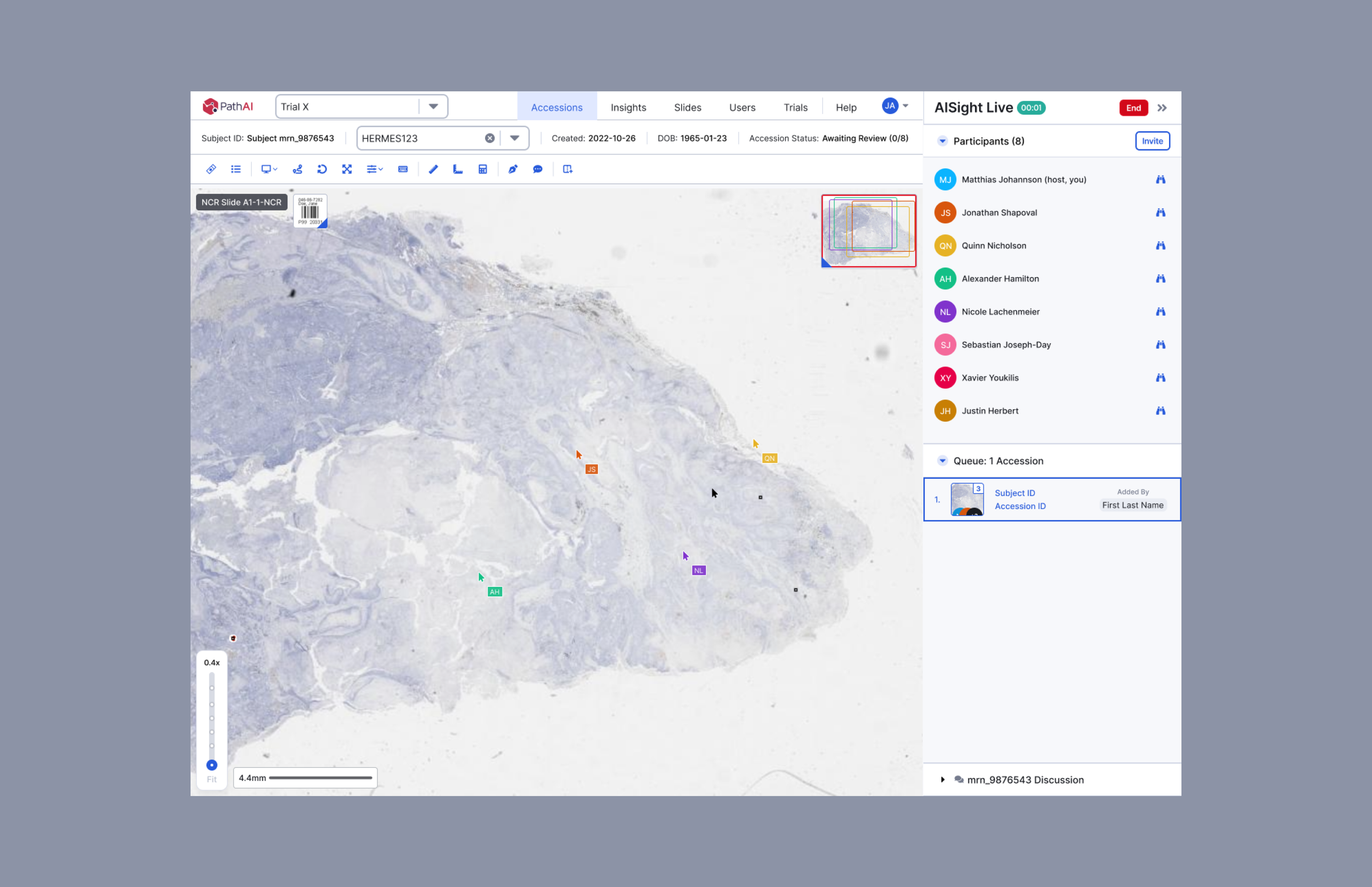
THE FINAL DESIGN
The final design allowed pathologists to easily start a session, spotlight users, annotate slides, and communicate via voice and text chat. These features were specifically designed to reduce cognitive load, enabling pathologists to focus on diagnosing rather than learning new tools.

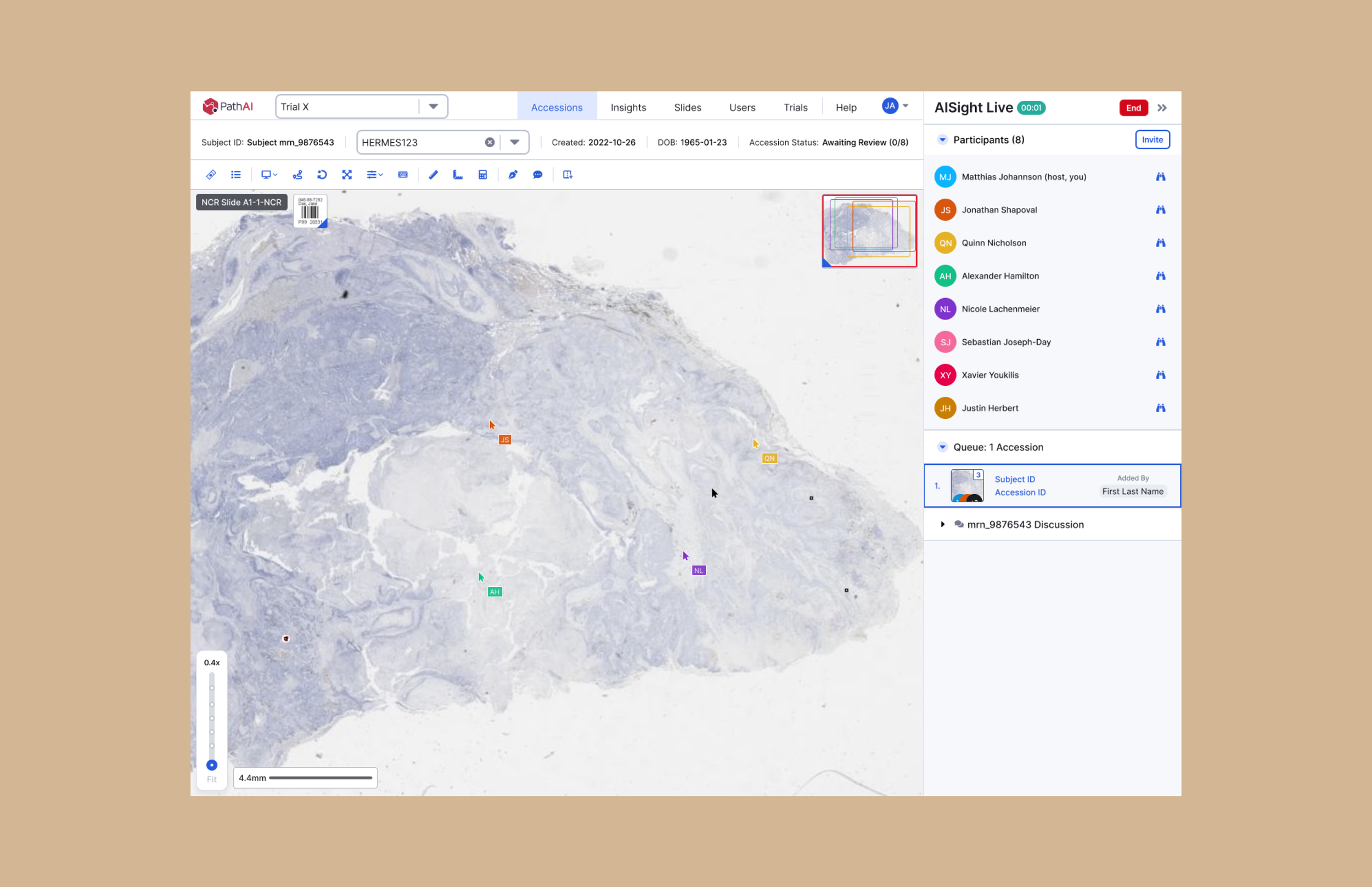
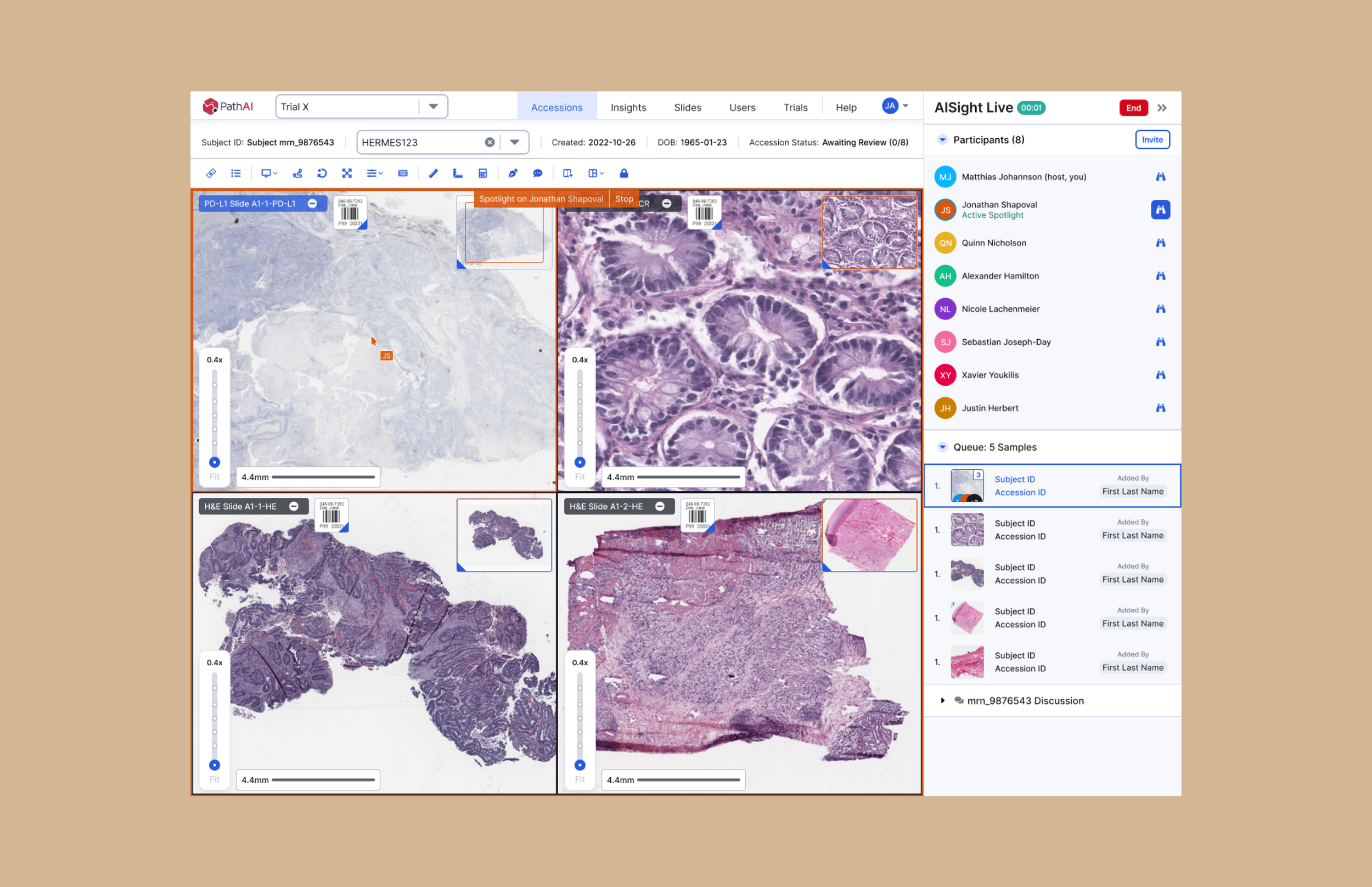
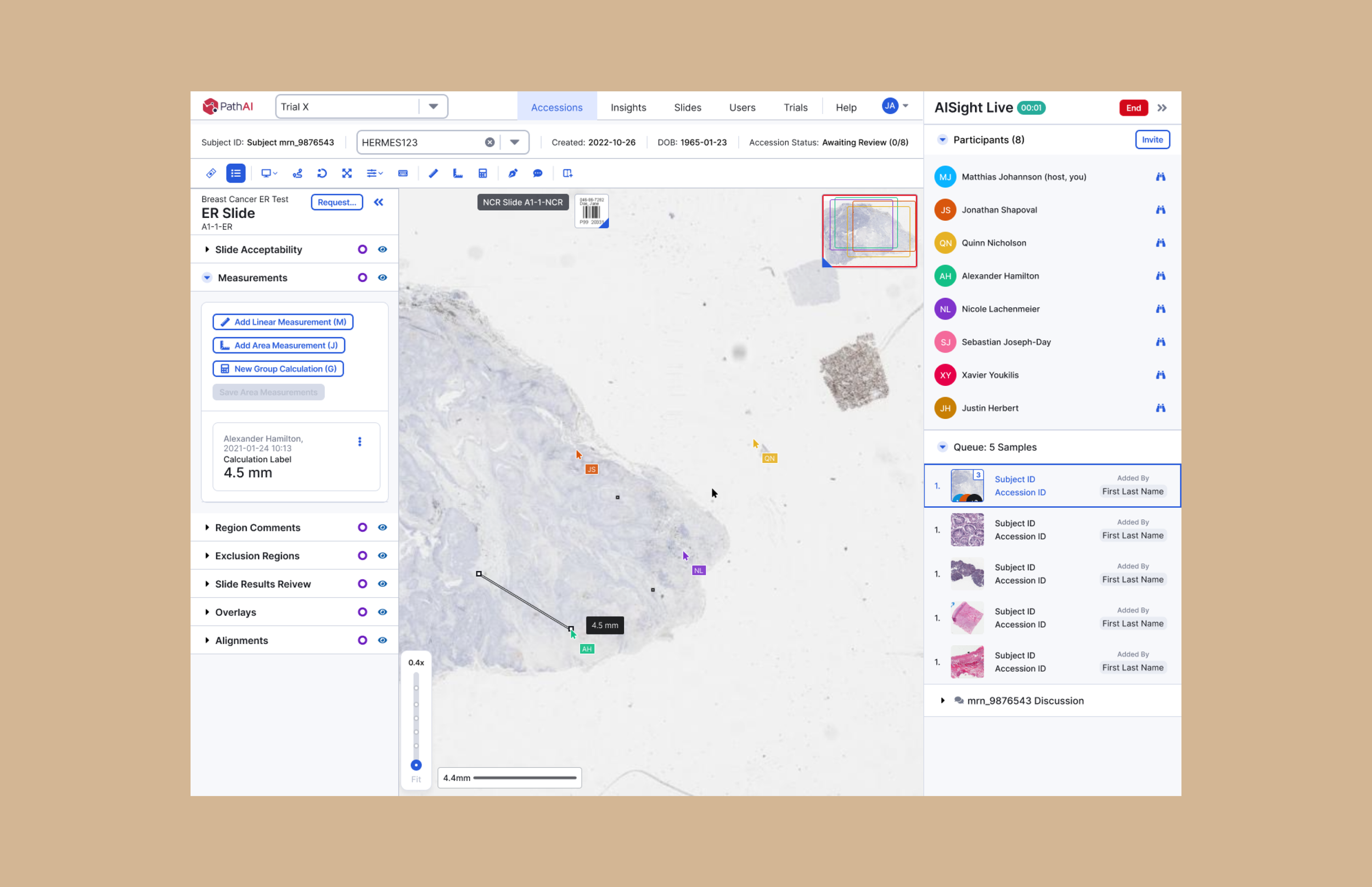
Gif showing the experience of spotlighting another user and seeing their cursors’ position in real-time.
THE RESULTS
This feature officially launched in Q1 2024 and our in house lab immediately started using it to great success. As in house lab director Dr. Shawn Kinsey puts it:
More importantly, this tool allowed us to sign 3 major deals shortly after its release. This feature was credited by our new partners as a key value driver that pushed our platform across the line, vaulting our 2-years young platform well passed our competitors’ decades-old viewer products.
THE TAKEAWAYS
Synchronous collaboration is one of the major benefits to a digitized pathology workflow. My designs not only met pathologists where they were in their analog workflow, but incorporated well known tech-adjacent paradigms commonly found in other platforms they work in to reduce the cognitive load of learning new tools. What I’ve shown here is the initial launch version, with many more iterations to come as this product competes in the digital pathology workspace.



